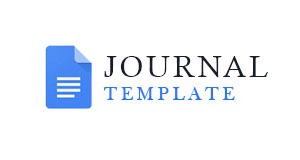THE COMPARATIVE ANALYSIS OF ISLAM BANKING PERFORMANCE IN TERMS OF CAMEL AND RGEC IMPLEMENTATION
Abstract
Keywords
Full Text:
PDFReferences
Ahsan, M. K. (2016). Measuring Financial Performance Based on CAMEL: A Study on Selected Islamic Banks in Bangladesh. Asian Business Review, 6(1), 47. https://doi.org/10.18034/abr.v6i1.803
Edi Susilo. (2017). Analisis Pembiayaan Dan Risiko Perbankan Syariah. Pustka Pelajar UNISNUPRESS.
Ikatan Bankir Indonesia. (2016). Manajemen Kesehatan Bank Berbasis Risiko. PT Gramedia.
Khairul Umam. (2013). Manajemen Perbankan Syariah. Pustaka Setia.
Khalil, F., & Siddiqui, D. A. (2019). Comparative Analysis of Financial Performance of Islamic and Conventional Banks: Evidence from Pakistan. SSRN Electronic Journal. https://doi.org/10.2139/ssrn.3397473
Ledhem, M. A., & Mekidiche, M. (2020). Economic growth and financial performance of Islamic banks: a CAMELS approach. Islamic Economic Studies, 28(1), 47–62. https://doi.org/10.1108/IES-05-2020-0016
Muhammad. (2014). Manajemen Dana Bank Syariah. Rajawali Pers.
Otoritas Jasa Keuangan. (2017). POJK Nomor 14/SEOJK.03/2017 Tentang Penilaian Tingkat Kesehatan Bank Umum. Peraturan Otoritas Jasa Keuangan,
Peraturan OJK NOMOR 4 /POJK.03/2016, (2016).
Paleni, H. P., & Aprianto, R. (2019). Analisis Tingkat Kesehatan Bank Pada Pt. Bpr Sindang Binaharta. Jurnal Ilmu Manajemen, 7(2), 114. https://doi.org/10.32502/jimn.v7i2.1562
Peraturan Bank Indonesia No. 6/10/PBI/2004.
Surat Edaran OJK. (2017). SAL SEOJK 14 Tingkat Kesehatan BU. 24. http://www.ojk.go.id/id/kanal/perbankan/regulasi/surat-edaran-ojk/Pages/Surat-Edaran-Otoritas-Jasa-Keuangan-Nomor-14-SEOJK.03-2017.aspx
Tjondro, D., & Wilopo, R. (2011). Pengaruh Good Corporate Governance (GCG) Terhadap Profitabilitas Dan Kinerja Saham Perusahaan Perbankan Yang Tercatat Di Bursa Efek Indonesia. Journal of Business and Banking, 1(1), 1. https://doi.org/10.14414/jbb.v1i1.148
Undang-Undang Perbankan Syariah No.21 Tahun 2008.
Unud, E. M. (2017). Fakultas Ekonomi dan Bisnis Universitas Udayana (Unud ), Bali. 6(2), 948–974.
Wahasusmiah, R., & Watie, K. R. (2018). Metode Rgec : Penilaian Tingkat Kesehatan. I-Finance, 04(02), 170–184.
Y. Sri Susilo. Dkk. (2000). Bank dan Lembaga Keuangan Lain. Salemba Empat.
DOI: https://doi.org/10.24952/tijaroh.v7i1.3625
Refbacks
- There are currently no refbacks.
Copyright (c) 2021 At-tijaroh: Jurnal Ilmu Manajemen dan Bisnis Islam

This work is licensed under a Creative Commons Attribution-ShareAlike 4.0 International License.









